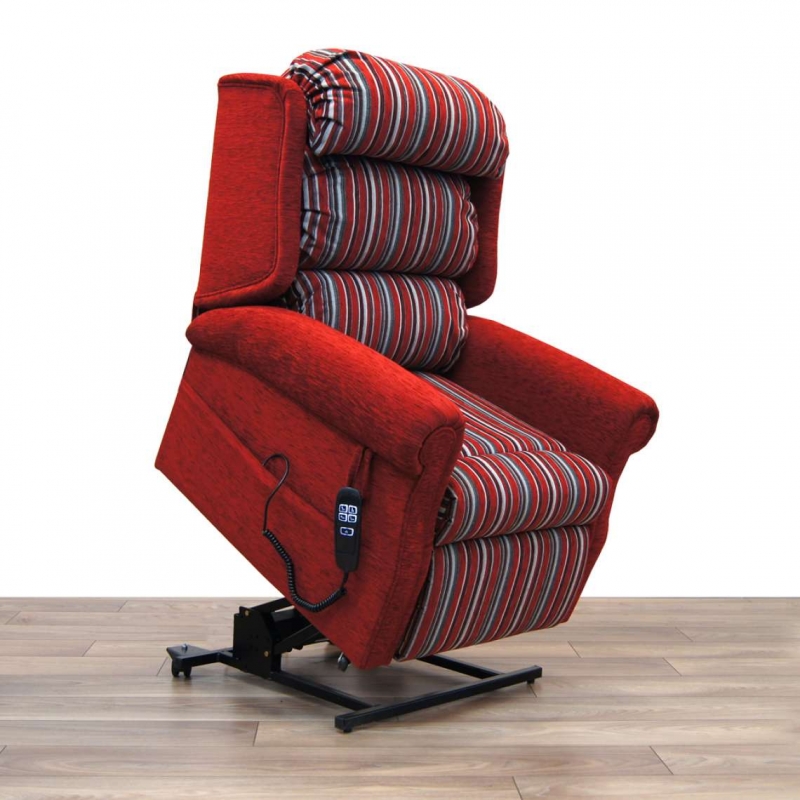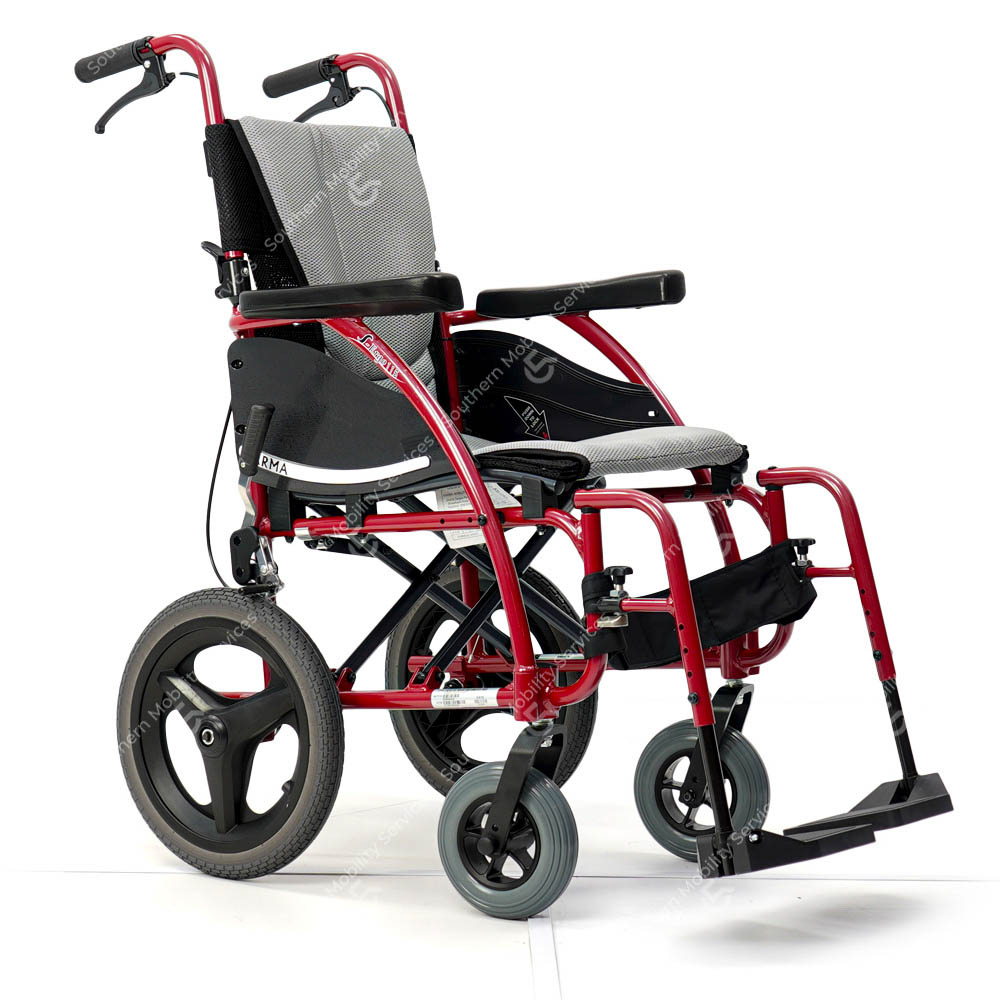Answer: A dual motor tilt-in-space riser recliner chair allows for independent adjustment of the backrest and leg rest, and also provides a tilt-in-space function where the entire chair tilts backwards while maintaining the hip angle. This feature helps redistribute pressure and can be beneficial for individuals with limited mobility or those who spend extended periods seated. The “riser” element aids users in standing from a seated position.
Answer: Tilt-in-space has several benefits:
Pressure redistribution: Tilting shifts the user’s weight away from pressure points, reducing the risk of pressure ulcers and unloading the spine & neck.
Postural support: Maintains the user’s posture, preventing sliding and promoting comfort.
Improved circulation: Tilting can aid blood circulation, especially for those with compromised mobility.
Answer: These chairs are ideal for individuals who:
Spend long periods seated
Have difficulty repositioning themselves
Are at risk of pressure ulcers
Require additional postural support
Desire the stand-assist function of a riser recliner.
Answer: Operation is simple, typically using a user-friendly hand control. The control allows you to raise the chair for standing, recline the backrest, and engage the tilt-in-space function.
Answer: Yes, some features to look out for include:
Adjustable headrest and armrests: For personalised comfort.
Battery backup: Provides functionality during power outages.
Variety of fabrics and colors: To match your decor. (purchase only)


Answer: The Karma Ergo 115 Transit wheelchair is designed for individuals who need assistance with mobility and require a caregiver or attendant to push the chair. It’s ideal for short trips, indoor use, and transportation in vehicles.
The Karma Ergo 115 gives a high standard of support and seating comfort.
Answer: The Karma 115 Transit wheelchair is exceptionally lightweight. It typically weighs around 12 kg (26 lbs), making it easy to maneuver and lift for storage or transportation.
This can be be made lighter by removing the wheels and legrests.
Answer: The S-Ergo seating system is a unique feature of Karma wheelchairs. Its contoured S shape is designed to provide better pressure distribution and reduce the risk of the user sliding forward. This promotes better posture and comfort.
Answer: Yes, the Karma 115 Transit wheelchair has been crash-tested. This means it’s approved for safe use in adapted vehicles when properly secured.
Answer: The Karma 115 Transit wheelchair usually comes in three seat widths: 16 inches, 18 inches, and 20 inches. This allows you to choose the size that best accommodates the user for optimal comfort and support.
Answer: The Invacare Rea Azalea wheelchair is a highly adaptable tilt-in-space wheelchair designed to cater to individuals with diverse postural and comfort needs. It’s suitable for both active and passive users, making it ideal for people with limited mobility or those requiring significant postural support.
The wheelchair’s key feature is its tilt-in-space mechanism, which allows for easy adjustment of the seat and backrest angles. This not only enhances comfort but also aids in pressure relief and postural management. The Azalea’s versatility extends further with various seating system options and adjustments, ensuring a personalised fit for every user.
Whether used indoors or outdoors, the Invacare Rea Azalea is a reliable choice for individuals seeking comfort, support, and adaptability in their wheelchair. It’s an excellent solution for those managing postural challenges, pressure care needs, or simply seeking a comfortable and customisable seating experience.
Answer: The Invacare Rea Azalea weights 75lbs – 34kg
This can be be made lighter by removing the wheels and legrests.
Answer: The gas-spring technology and a unique pivot point design:
Gas Springs: The wheelchair employs gas springs (similar to those used in car boots) to control the tilting motion. These springs are compressed when the tilt lever is activated, allowing the seat and backrest to tilt smoothly and gradually.
Pivot Point: Unlike traditional tilt chairs that pivot at the rear axle, the Rea Azalea has a pivot point positioned closer to the user’s center of gravity. This design choice offers several benefits:
Enhanced Stability: By shifting the center of gravity forward and down during tilting, the chair maintains stability even at a full 25° tilt. This reduces the risk of tipping and provides a safer experience for the user.
Reduced Shear and Friction: The pivot point mimics the body’s natural movements during tilting, minimising shear forces and friction. This helps prevent pressure sores and ensures comfort for the user.
Overall, the Invacare Rea Azalea’s tilt-in-space function is designed to provide a safe, comfortable, and supportive experience for users who require frequent repositioning or pressure relief. The gas springs and innovative pivot point work together to ensure stability, reduce shear forces, and promote optimal posture.
Answer: Yes, the Invacare Rea Azalea wheelchair has been crash-tested. This means it’s approved for safe use in adapted vehicles when properly secured.
Answer: The Invacare Rea Azalea wheelchair usually comes in three seat widths: 14 inches, to 25 inches inches. This allows you to choose the size that best accommodates the user for optimal comfort and support.
Answer: A portable mobility scooter, designed for ease of transport and convenience, offers a significant degree of freedom for those with mobility challenges. These scooters, typically lightweight and foldable, are ideally suited for navigating smooth, level surfaces. You’ll find them particularly useful in indoor environments such as shopping centres, supermarkets, and museums, where wide, even pathways allow for comfortable manoeuvring. They are also excellent for use within airports, assisting with long distances between terminals.
Outdoors, their practicality extends to paved footpaths, parks with well-maintained tarmac paths, and pedestrianised town centres. Consider also their utility in holiday settings, where smooth promenades and accessible tourist attractions are available. Portable mobility scooters are designed to be travel-friendly, fitting into car boots or even aircraft cargo holds, expanding travel possibilities. It is important to remember that these scooters are best suited to even surfaces, and while some may handle slightly uneven pavements, they are generally not designed for rough terrain, such as grassy fields, gravel paths, or heavily cobbled streets. User safety and comfort is paramount, therefore when considering using a portable mobility scooter, always check the terrains suitability.
Answer: Portable mobility scooters can weigh as little as 44lbs – 20kg
This can be be made lighter by removing the seat and rear axel.
Answer: The distance a portable mobility scooter can travel varies, but generally, you can expect a range of roughly 10 to 15 miles on a single charge. However, this can be influenced by factors like the scooter’s battery capacity, the user’s weight, terrain, and weather conditions. 1 Some models with enhanced batteries may achieve slightly greater distances.
Answer: Yes, some portable mobility scooters do have suspension. While not all portable models include it, there are definitely options available that prioritise rider comfort by incorporating suspension systems. These systems are designed to absorb bumps and uneven terrain, providing a smoother ride.
Answer: The charging time for a portable mobility scooter varies depending on the battery capacity and the charger’s output, but typically it takes between 4 to 8 hours for a full charge.

SMS Mobility Scooter Hire was established in 1997 and supplies all aspects of mobility equipment.
Copyright © SMS Mobility Scooter Hire 2025. All rights reserved.